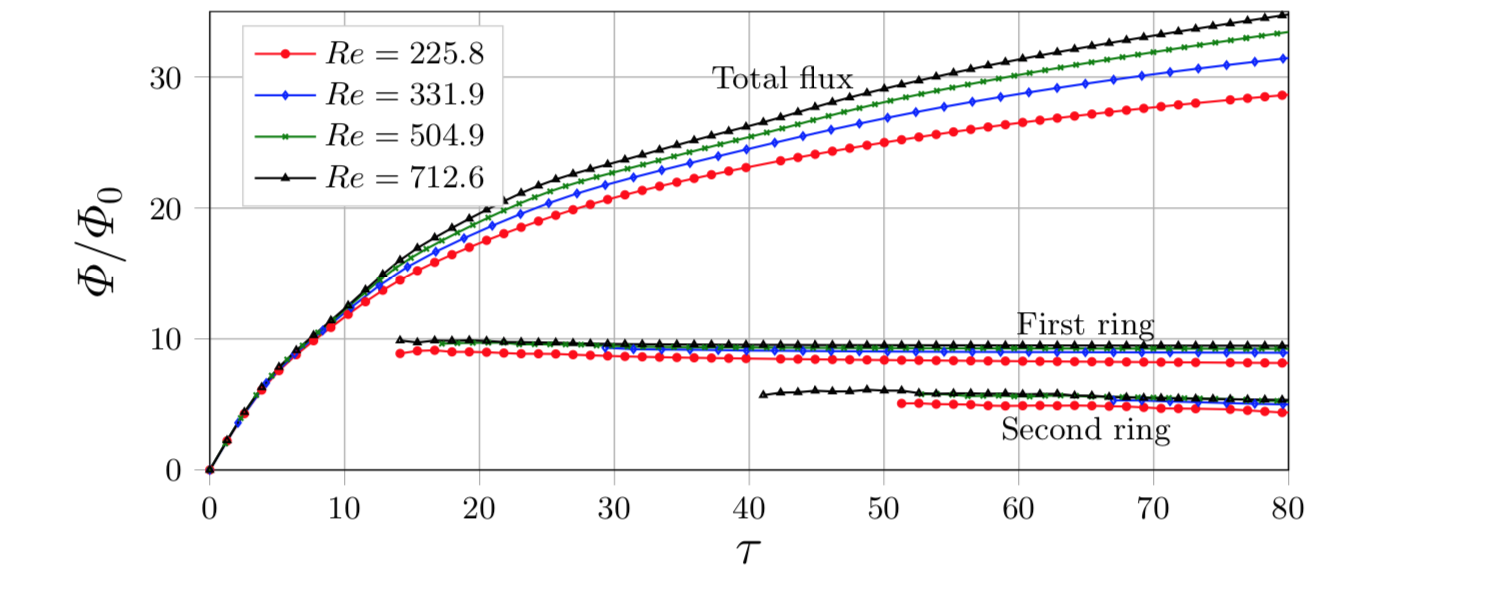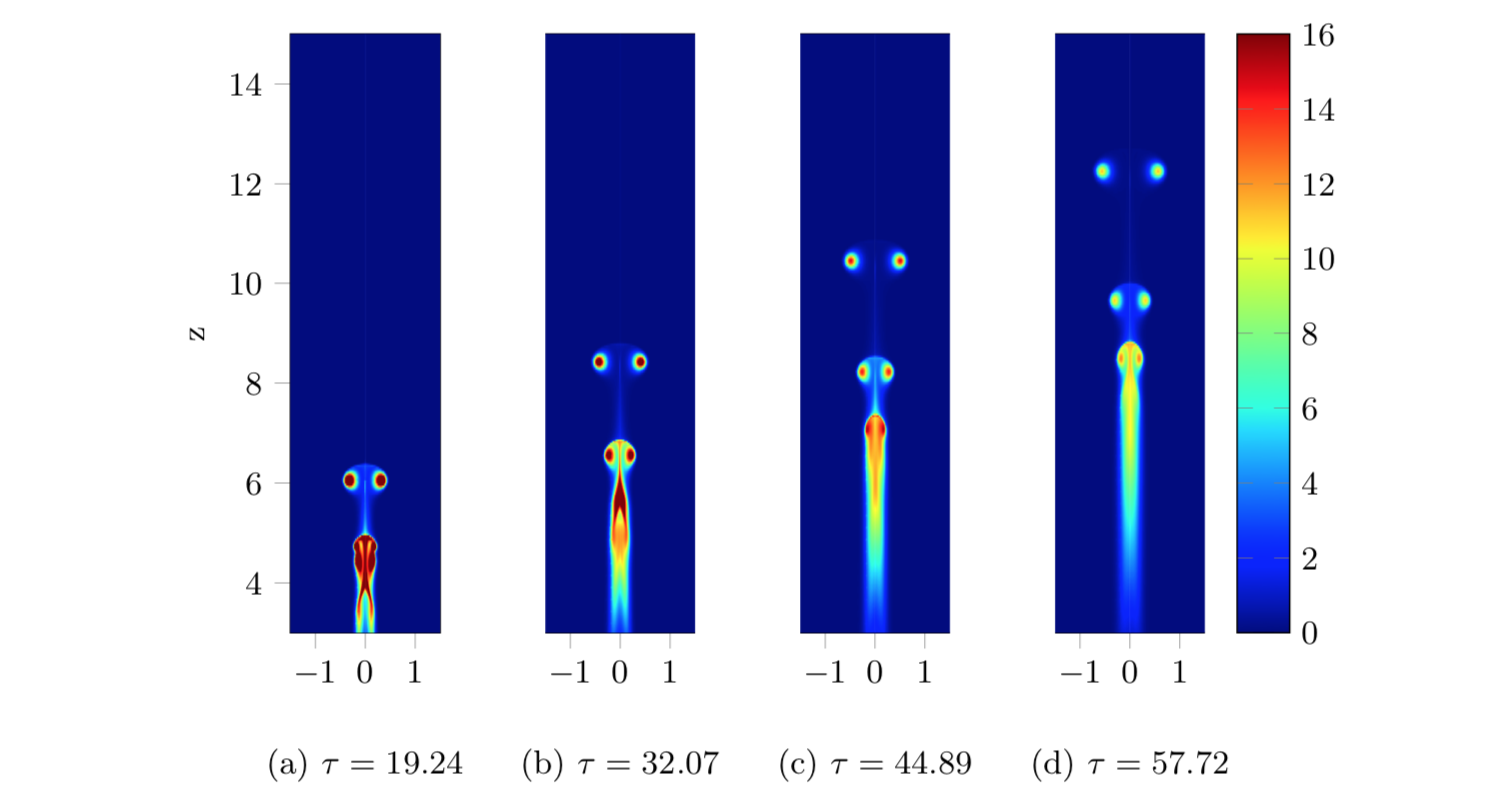Thermals

Thermals are buoyant parcels of fluid that undergo motion relative to their surroundings. They can be seen in a variety of settings in both nature and industry on a range of scales. Perhaps the most common day-to-day observation are cumulus humilis clouds that form when thermals rise above their dew point. These thermals are a common source of lift for birds and air enthusiasts as part of the gliding process as illustrated below in the images from the FAA gliding handbook.

The first studies of turbulent thermals were performed by Scorer (1957) who recognised their importance in atmospheric processes. He performed experiments and developed an entrainment model providing several scaling laws. Since this work there have been many further studies on the subject of turbulent thermals. The laminar case (as illustrated in the top image) is significantly less well studied however.
A very early reference can be found in the fantastic book On Growth and Form by the naturalist D’Arcy Wentworth Thompson. Though there have been a few studies of the phenomenon, these have often been observational and focus on a specific stage of the development rather than the overall phenomenon. They also left a number of unexplained phenomena or paradoxical observations. Therefore we conducted a numerical study of the entire life cycle of a laminar thermal, separating it into three key stages; the buoyant blob, the mushroom cap, and the buoyant vortex ring. By constructing a framework based on vorticity flux and impulse we were able to observe the development and transitions between the three stages, and shed light on some of the previously unresolved issues. Further, we demonstrate that, due to viscosity being unimportant at small timescales, there is an independence across Reynolds number in the properties of the buoyant vortex rings produced (see image below).

Finally, we made an interesting observation that it is possible for secondary vortex rings to be produced. The wake left behind can undergo a similar process to the first, forming a second mushroom cap that wraps up to form a secondary buoyant vortex ring. This process is illustrated in the following image.

The results of this work are presented in the following publication containing an in-depth discussion of the life-cycle and development:
2019 - Journal of Fluid Mechanics
Atkinson JW and Davidson PA
The evolution of laminar thermals
DOI: 10.1017/jfm.2019.690
–
PDF
A presentation on this work won the best presentation prize at the 2017 UK Fluids Conference.